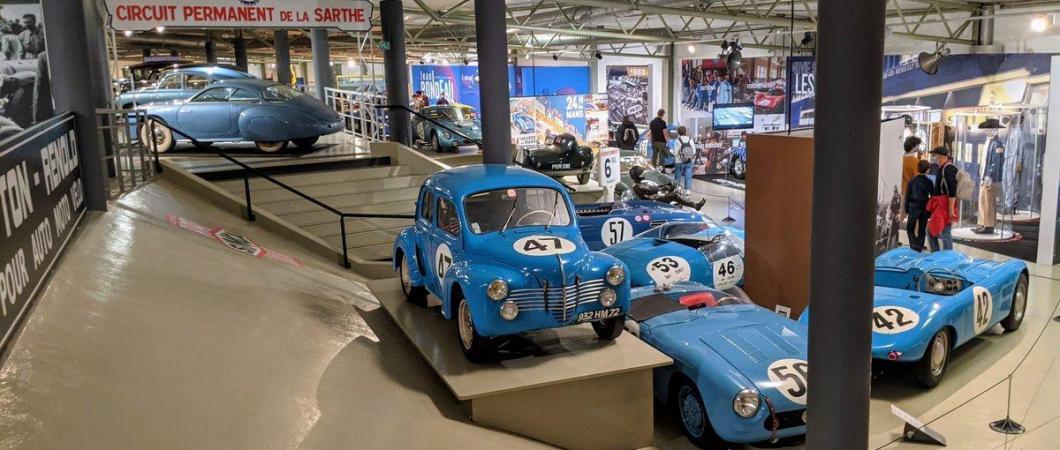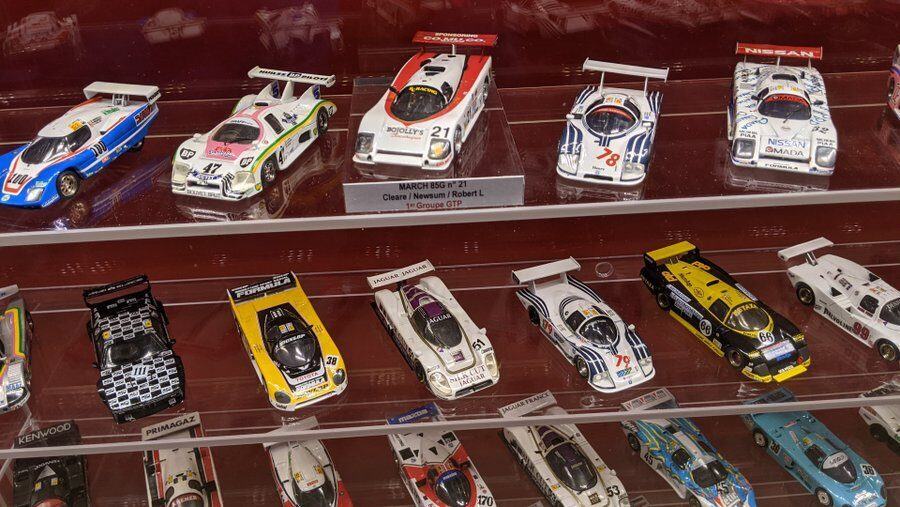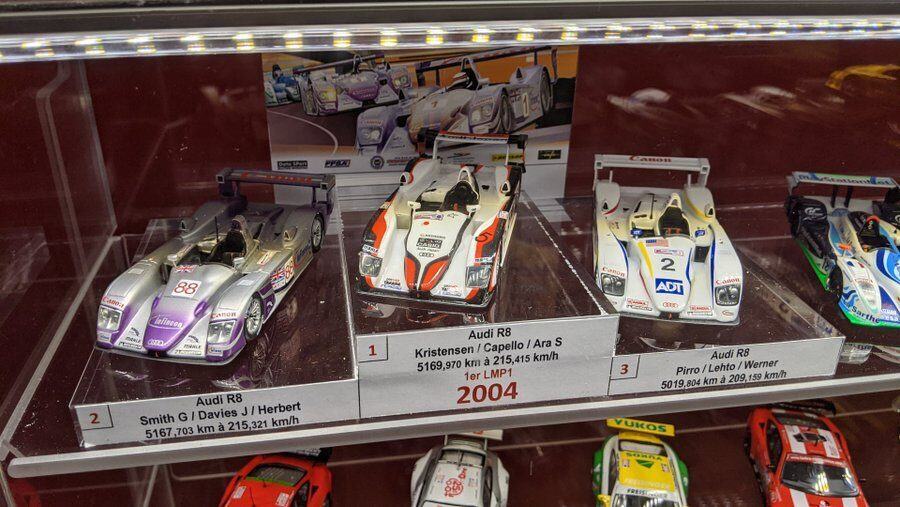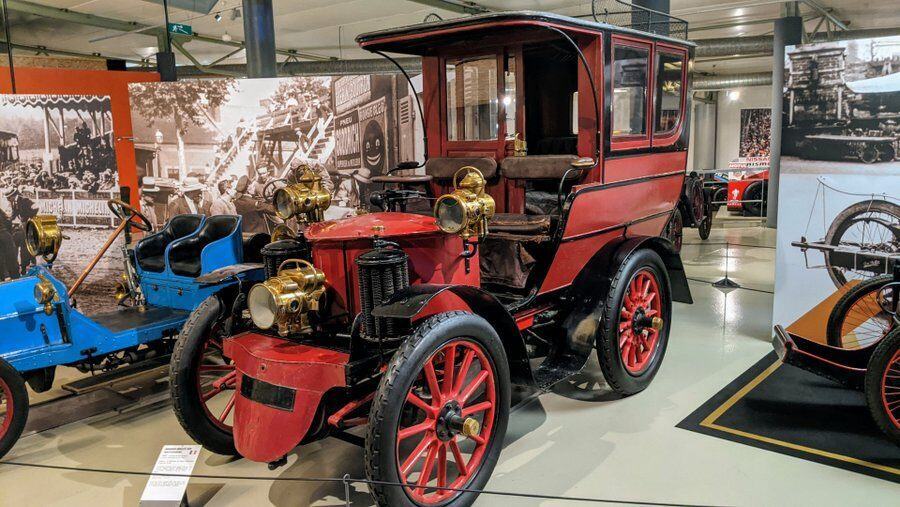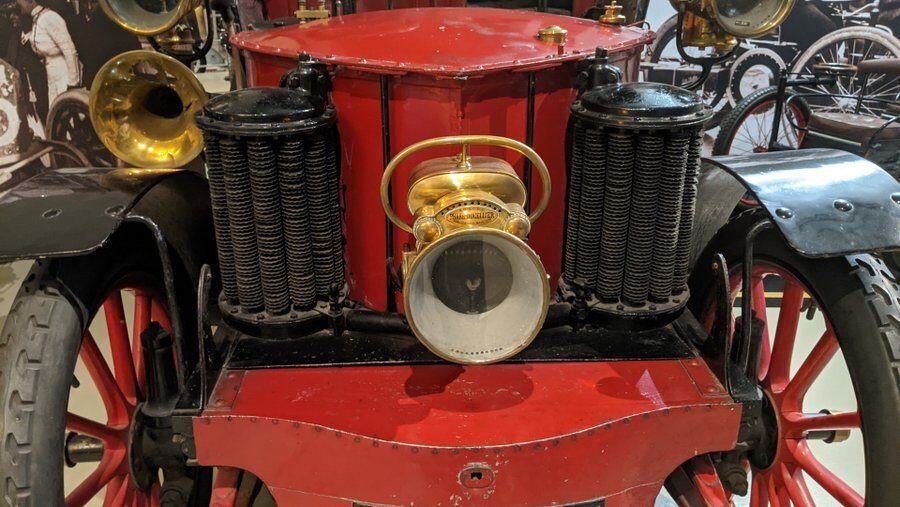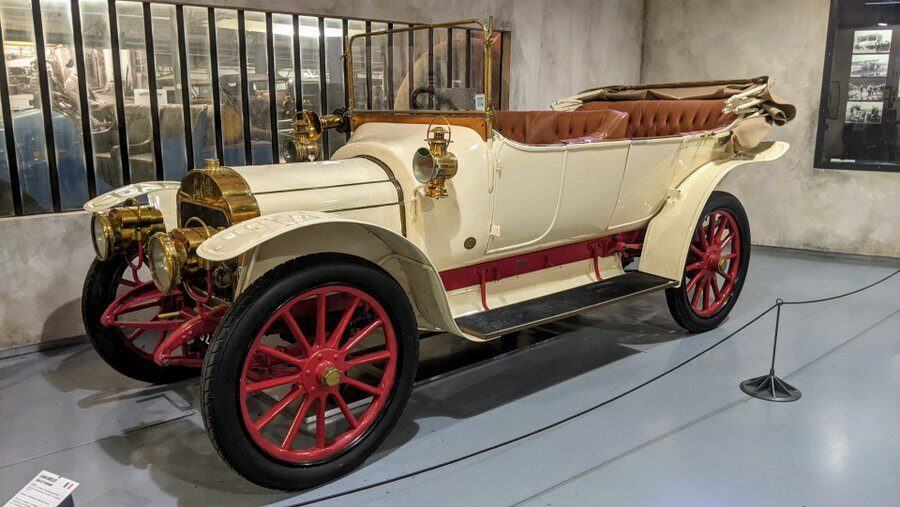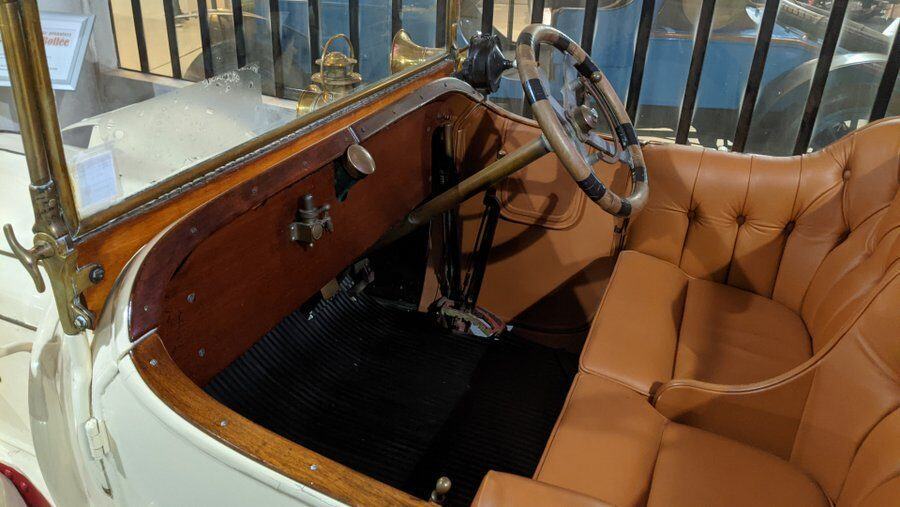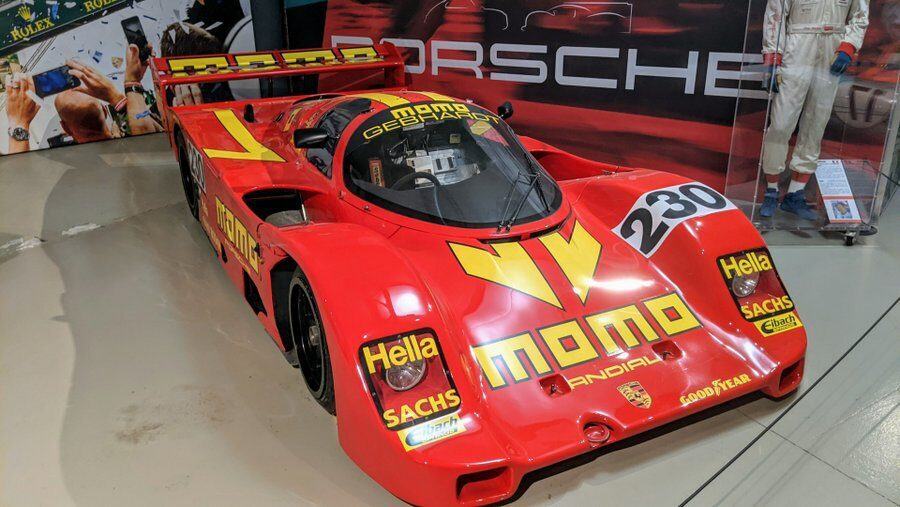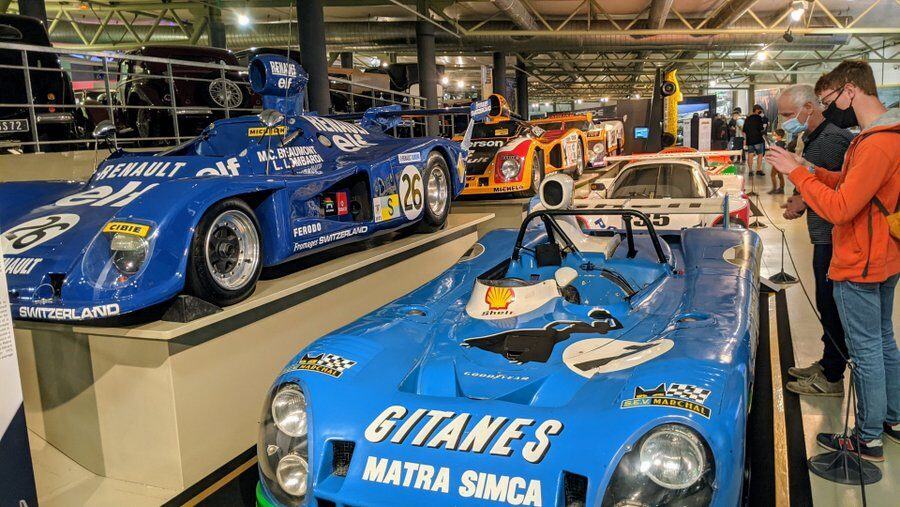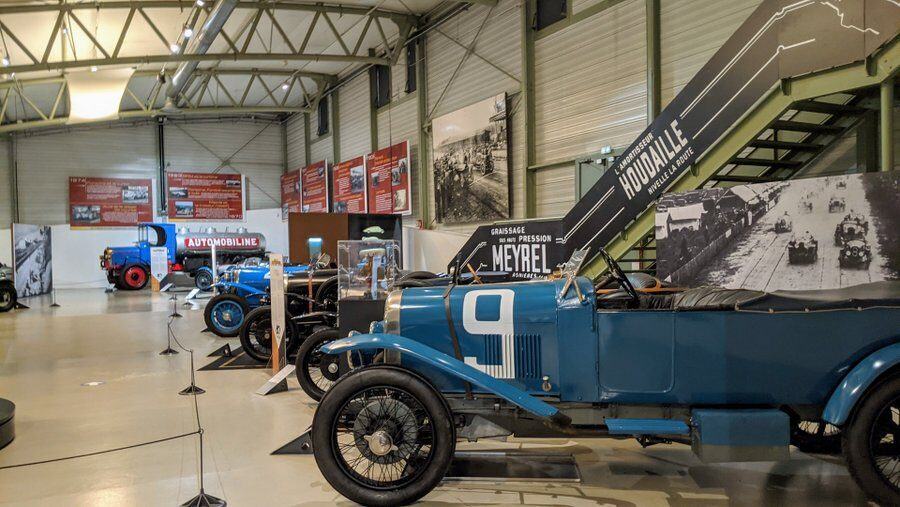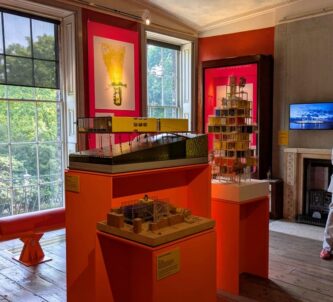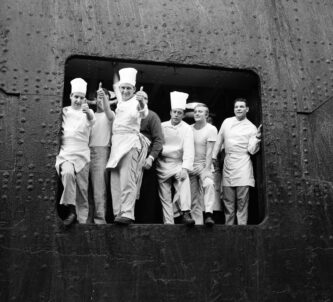Le Musée des 24 Heures du Mans (“The Museum of the 24 Hours of Le Mans”) sits right next to the famous 24hr racetrack outside the city of Le Mans, and this year the museum is celebrating its 60th anniversary.
History of the 24 hours of Le Mans
It all starts with the birth of the automobile industry itself. One of the early French pioneers, bell-maker Amédée Bollée, moved to the town of Le Mans in the département of the Sarthe (a river) in 1842, and began working on his passion, steam powered carriages. He built his amazingly successful 12-seater Obéissante (“Obedient”) car in 1873, which immediately proved itself by driving from Paris to Le Mans in 18 hours! (Update: I was delighted to find l’Obéissante at the Musée des Arts et Métiers in Paris.)
Suddenly Le Mans was the place to be for budding automobile engineers & entrepreneurs (It still is. The automobile industry is the second largest employer in the region after agriculture). As the industry grew, France became enthralled with the glamorous new tech and the Automobile Club de France (ACF) was formed in 1895. Eleven years later, the ACF licensed the département of Sarthe to run a ‘Grand Prix’ race. It would be the birth of Formula 1.
The Automobile Club de la Sarthe, which later became the Automobile Club de l’Ouest (ACO) was created to organise the race on a 103-kilometre circuit, on which Hungarian driver Ferenc Szisz triumphed in a Renault.
That one-off event triggered the idea of an annual motor race, but not focused just on speed. Rather – for the benefit of local, national and international car manufacturers who wanted to demonstrate the speed and reliability of their vehicles – the race was to be focused on endurance. The concept of a 24 hour race was born, and the first took place on 26 May 1923 when 33 cars set off around a 17-kilometre circuit outside Le Mans. The “Grand Prix of Speed and Endurance/Rudge-Withworth Cup” was won by a Chenard & Walcker car driven by André Lagache and René Léonard, at an average 92 kph.
The 24 hours of Le Mans – Race and Track
The race is won by the car that covers the greatest distance in 24 hours. Although there is an overall winner, cars also compete in a number of classes.
There must be at least three drivers for each car. Individual drivers cannot drive for more than 4 hours in any 6 hour period, and no single driver can spend more than 14 hours at the wheel in total. Drivers are swapped during fuel stops when the engine must be switched off. It’s another test of reliability – they don’t always switch back on!
The 13.6 km (8.5 mile) ‘Circuit de la Sarthe’ comprises both permanent race track and public roads that are closed for the race. The public roads include the famous 6 kilometre long straight section of the D338 leading into the village of Mulsanne – aka the Mulsanne Straight. I didn’t realise I was on it until I noticed all the scaffolding TV camera towers and fencing being put up as we drove into Le Mans!
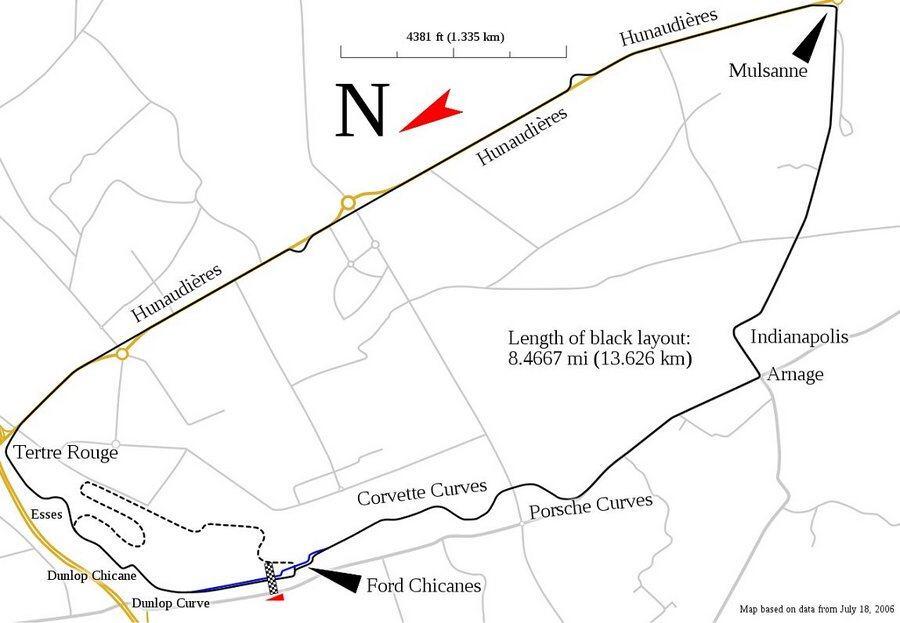
The Mulsanne Straight was ‘nerfed’ in 1990 when, for safety reasons, the motor sport governing body, the FIA, disallowed straights longer than 2 km. To be fair, by then cars were getting up to speeds over 400 kph/250 mph! Two chicanes now break the straight up into 3 x 2 km sections.
The 24-hour Le Mans race traditionally takes place on the second weekend of June. This year it was held in August which is how my visit to the museum coincided with practise day! The race itself usually starts in the afternoon on Saturday and finishes at the same time on Sunday. These days there are typically around 60 cars competing.
As an annual event (the schedule has only been interrupted by war, political upheaval and pandemics) it quickly established grandstands, pits, race control and other buildings on the permanent section of race track, which also forms part of the shorter and much twistier permanent ‘Bugatti Circuit’ (the hashed line on map above) which is used for car and motorcycle racing at other times of the year.
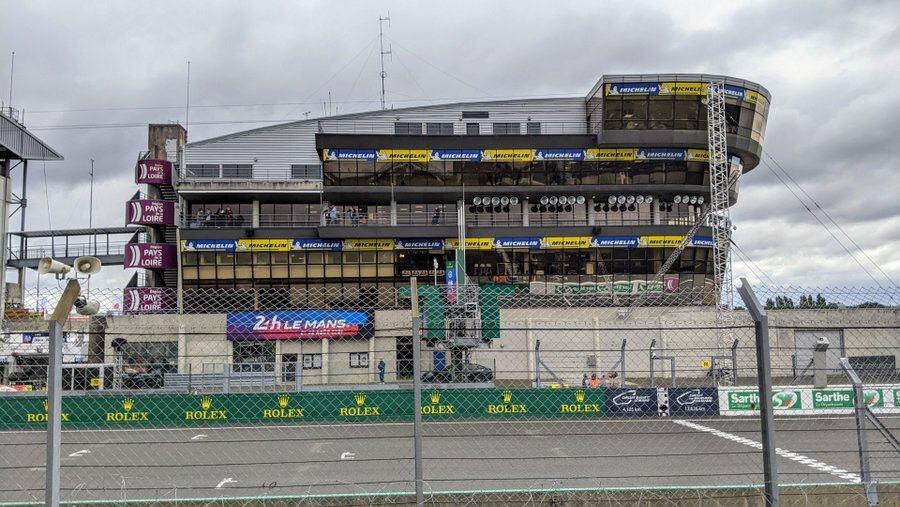
The most often asked question about the 24 Hours of Le Mans race is: “What happened to the ‘Le Mans start’?” In the early days cars were lined up on one side of the track and drivers had to run across the track, start up and race off. This was finally dropped, again for safety reasons, in 1970. Too many drivers were being injured in the congested early laps because, in order to shave seconds off their start, they were not putting on their safety harnesses properly.
The 24 hours of Le Mans Museum
The original ‘Automobile Museum de la Sarthe’ opened in 1961, but in 1991 the Automobile Club de l’Ouest moved it into its present home right by the race track. While the focus is on the cars and history of the 24 hours of Le Mans, it also tells the story of the local automobile industry. The permanent exhibition of historic cars, documents, film and photographs is supplemented with a rolling programme of themed temporary exhibitions.
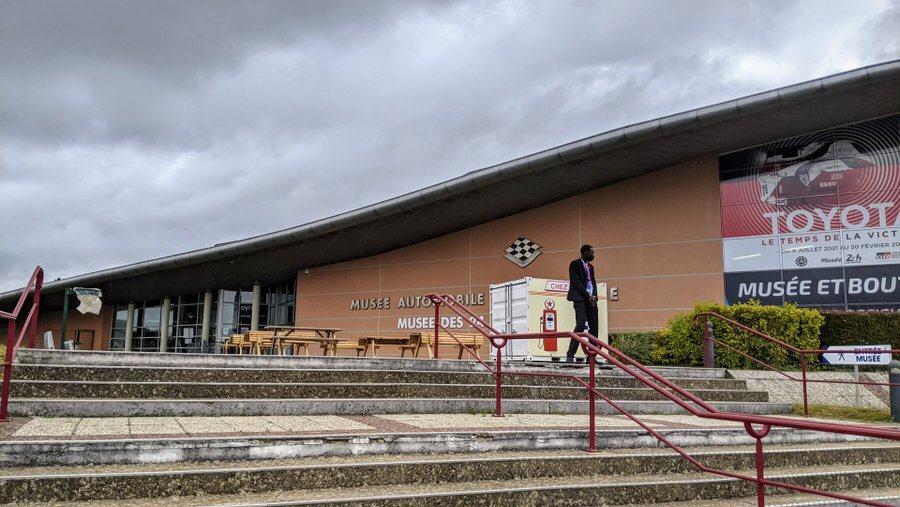
Cars, are of course the main exhibits and at any one time the permanent & temporary exhibitions can display between 100 – 140 historic vehicles. Some of them are fabulous!
The galleries and displays are laid out in a circular tour through the building, starting with a hall of fame featuring some of the big brands and personalities of the 24 hours of Le Mans – everybody from Bentley, Jaguar & Ferrari to Ferry Porsche, Henry Ford II, Ettori Bugatti, & Steve MacQueen.
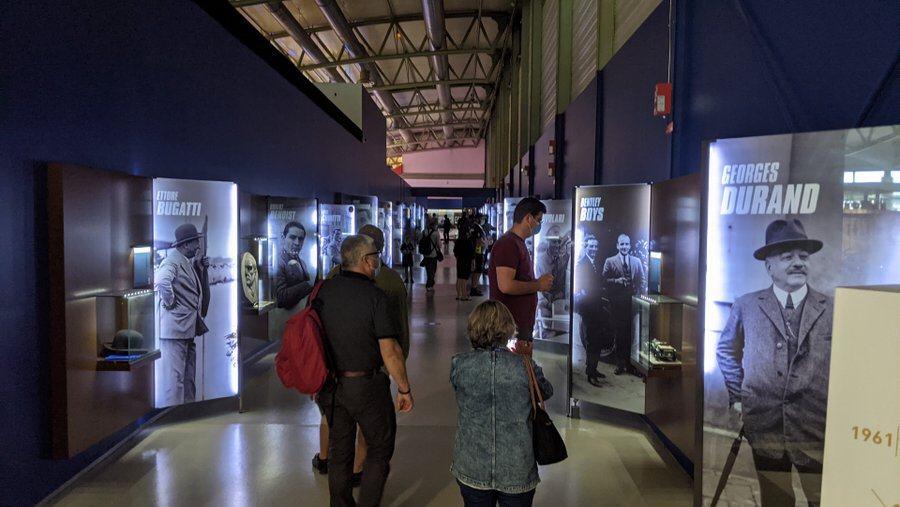
If you wanted to show off every winning car since 1923, but didn’t have the space for the real things, the model room is a pretty good alternative.
This large circular room with hundreds of detailed models is a fantastic resource for Le Mans fans and petrol heads, who can spend ages seeking out their favourite winners. Actually it’s not that hard, the collection is laid out chronologically.
It’s not all cars. Motorbikes also race at Le Mans, on the shorter Bugatti Circuit. The ACO set up the 24hr Moto in 1978, and in a nod to the old car starts, riders still have to run to their bikes at the start!
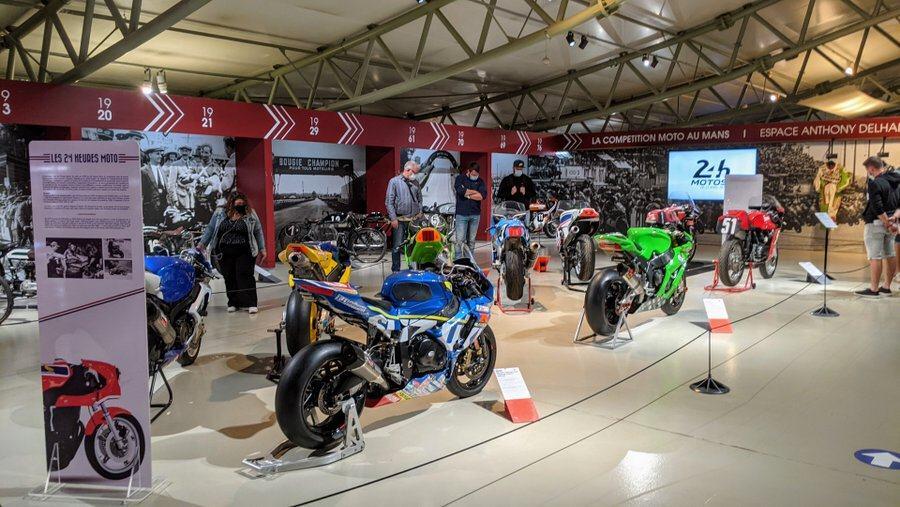
There are some spectacular bikes, and some classic vintage models like this 1913 2hp Lion Peugeot Moto Légère MD2. Note the pedals. This was in the crossover period between bicycles and motorised bicycles. Yup, we’d call it a moped today!
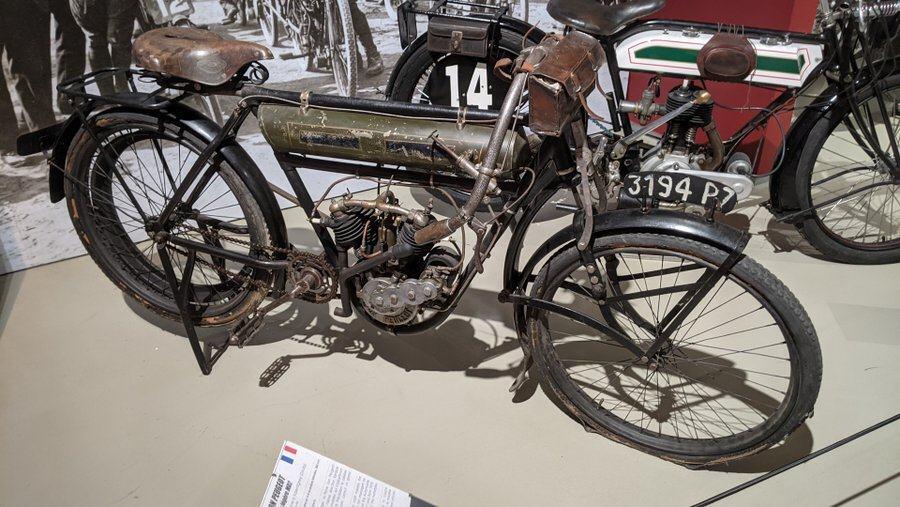
After the bikes, come the cars, starting with some classic vintage automobiles from the era before the 24 hour race. The man who, it’s generally agreed, kicked off the industry in Le Mans, Amédée Bollée, built this sophisticated 2-cylinder, 12 hp Type D Limousine in 1901. Who says radiators have to be flat?!
And his son, Léon Bollée, created this elegant 4-cylinder, 24 hp Type G1 Torpédo in 1912.
This Lancia Type 67 Lambda Torpédo (open tourer) marked a significant milestone in automobile development. It had a monocoque body (no chassis) and independent suspension on the front wheels. It was considered state-of-the-art when it was built in 1923… the same year the Le Mans 24hr started. Its 49 horsepower V4 engine took it up to 113 kph. Over 1,300 were made.
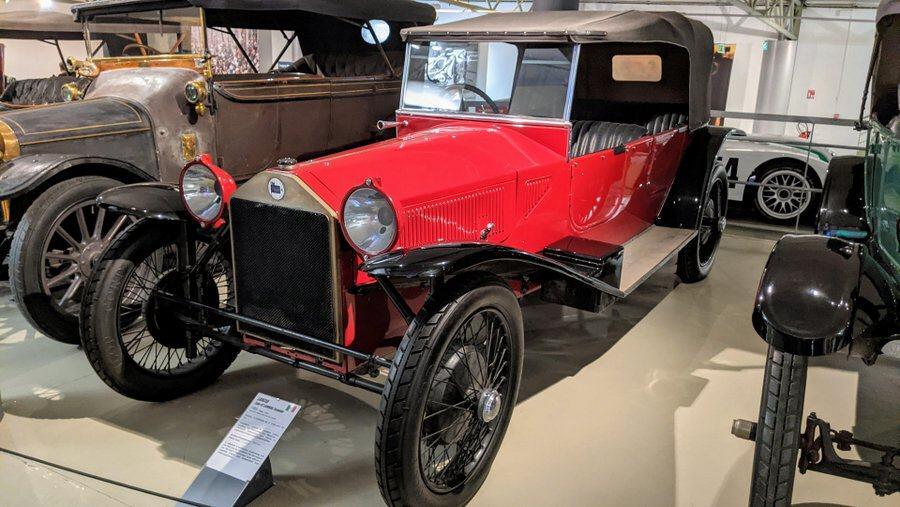
Even in the early years of the 24 hours of Le Mans race, competing automobiles had style and elegance. Perhaps none more so than Ettori Bugatti’s cars. This 1929 Type 40 tourer didn’t race, but plenty of Type 40s did.
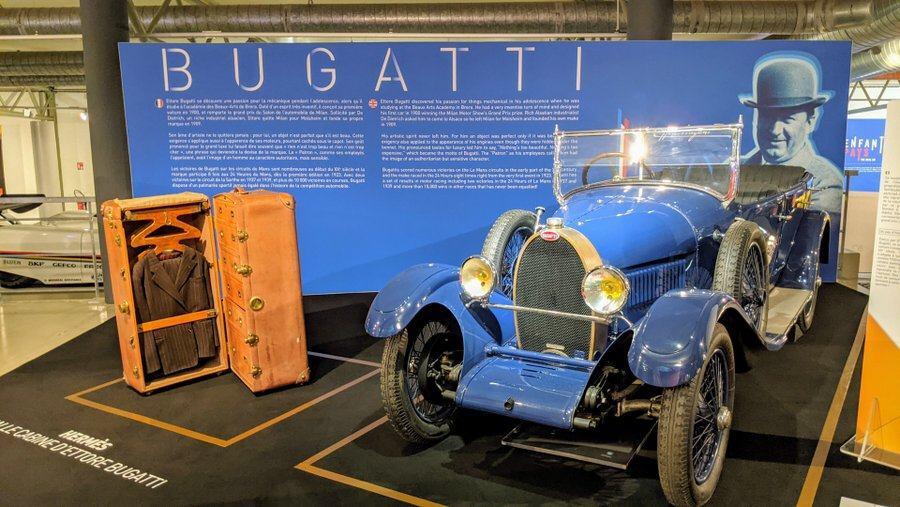
But then aerodynamics took over and cars began to be streamlined and began to look rather similar. The path back through the other side of the museum takes visitors past the cars that dominated the 24 hours of Le Mans race from post World War II to the present day.
What’s special about this car? The Morgan Onroak LMP2 from 2016 was designed for handicapped drivers, the cockpit could quickly be adapted at changeover for different drivers.
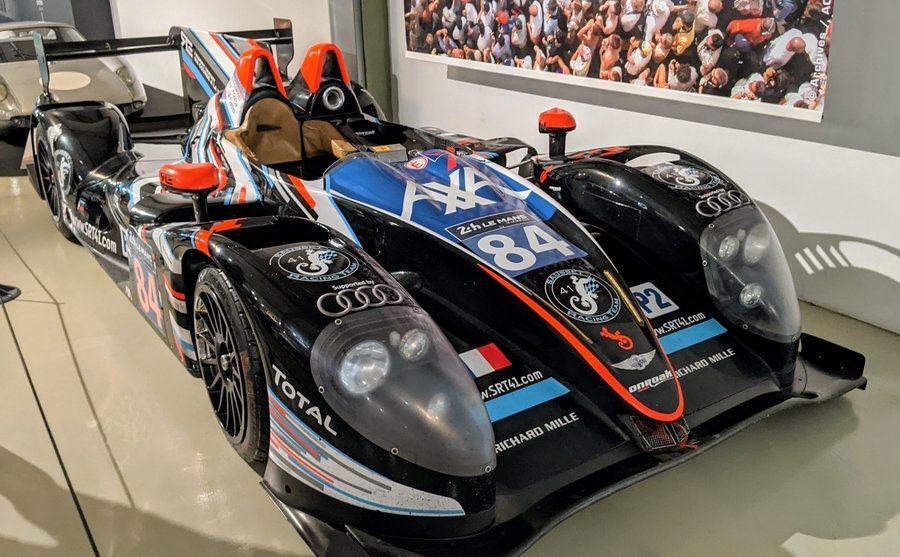
The Museum of the 24 Hours of Le Mans is something of a shrine for petrol heads. Many make the pilgrimage to the Circuit de la Sarthe to visit it year round, but on race days (I was there on the Friday/practice day) it is especially busy. So I was surprised at how easy it was to move around, look at exhibits, and even get some clear photos without people in the way. The museum feels packed with amazing exhibits, but not cramped.
Declaration: I was travelling in the area as a guest of the Pays du Mans tourist office. Museum entry was complementary.
Factbox
Website:
Musée des 24 Heures du Mans
Getting there:
The 24 Hours of Le Mans Museum
9 Place Luigi Chinetti
72100 LE MANS
France
In What3Words-speak, the entrance is at airship.mammals.filed
It’s a little distance outside Le Mans itself, so it is easiest to self-drive, and there’s plenty of car parking space on non-race days!
Alternatively, you can get a train to Le Mans and then a taxi, OR a tram from the centre of town out to the “Antares” stop, then a lengthy walk, OR the 3, 17 & 12 bus routes go from the centre out to the racetrack.
If you are flush with cash, the Le Mans Aerodrome is next door!
Entry Price (2021):
You can visit just the museum, or you can visit the track side areas as well.
| Museum | Museum + Track | |
|---|---|---|
| Adult (18+) | € 9.50 | € 12.50 |
| OAPs, Disabled, Job Seekers, Youth (10-18) | € 7.00 | € 10.50 |
| Children under 10 are free | ||
Opening Hours:
NB. Under current COVID regulations you must have a valid health certificate to visit.
| Winter (01 Oct – 30 Apr) | 10:00 – 18:00 Daily |
| Summer (01 May – 30 Sep) | 10:00 – 19:00 Daily |
Last entries 1 hour before closing
See also my quick guide to visiting Le Mans

